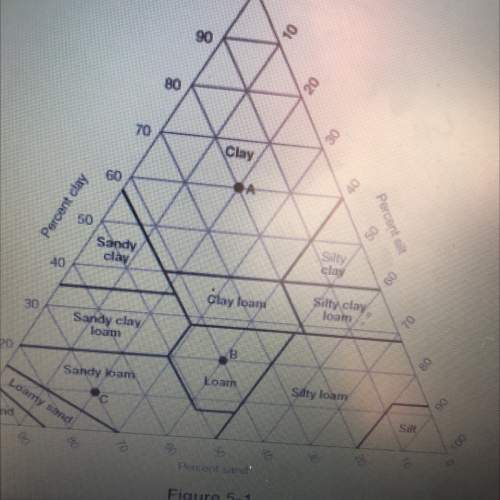
Biology, 20.07.2019 02:40 annaebrown4406
Lipids contain long chains of which two atoms

Answers: 1


Another question on Biology

Biology, 21.06.2019 12:30
A17-year-old primigravida is admitted in early labor. her cervix is 2 to 3 cm dilated and 100% effaced. the fetus is cephalic, and the presenting part is at –1 station. her membranes are intact. the patient is holding her boyfriend's hand tightly and breathing rapidly with each contraction. she tells the nurse in a shaky voice, "i'm so nervous. i've never been in a hospital before. i don't know anything about labor or if i can do this." what is an appropriate nursing diagnosis for this patient?
Answers: 1

Biology, 21.06.2019 23:00
The tasmanian devil, a marsupial carnivore, is facing extinction due to devil facial tumor disease (dftd) which causes bulging cancerous lumps and lesions to erupt around the face and neck — often causing enough deformation to make seeing or eating difficult. dftd has evolved into a contagious cancer, a trait that is unique among cancers. devil mating behavior involves biting around the head and neck, allowing cells from one individual — especially cells from the crumbly dftd tumors — to be transferred to the wounds or face of a new individual. this marsupial was once found across australia, but sea levels rose, isolating the tasmanian population, while the australian population went extinct. what would be an outcome of genetic isolation that is likely to have impacted the spread of dftd? a) reduced territory puts diseased individuals in greater contact with non-diseased ones. b) inbreeding results in less variation in facial features so the cancer is generally fatal. c) genetic isolation has made it difficult for scientists to develop a vaccine against dftd. d) the lack of genetic variation in the immune system of tasmanian devils minimizes resistance to the disease.
Answers: 3

Biology, 22.06.2019 06:20
What are the fixed alleles in the human species? o a. the alleles that are on the most chromosomes b. the alleles that change most often 000 c. the alleles that no one has d. the alleles that everyone has
Answers: 2

Biology, 22.06.2019 06:40
Which of these has happened to your food by the time it reaches your small intestine? a. all the macromolecules have been broken down completely. b. lipids and starches have been partially broken down. c. starches and proteins have been partially broken down. d. proteins and lipids have been broken down into subunits.
Answers: 3
You know the right answer?
Lipids contain long chains of which two atoms...
Questions

Mathematics, 19.03.2020 19:04

Chemistry, 19.03.2020 19:04


Computers and Technology, 19.03.2020 19:05


Mathematics, 19.03.2020 19:05

Mathematics, 19.03.2020 19:06


Mathematics, 19.03.2020 19:06

Chemistry, 19.03.2020 19:06

Computers and Technology, 19.03.2020 19:06






Mathematics, 19.03.2020 19:06







